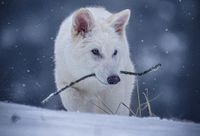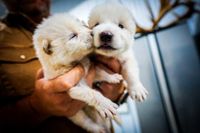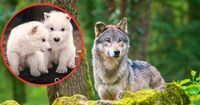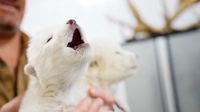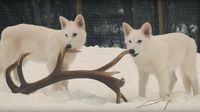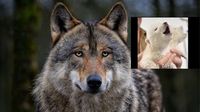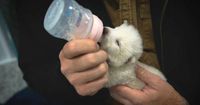In a groundbreaking announcement, American biotechnology company Colossal Biosciences revealed on April 7, 2025, that they have created three puppies exhibiting traits of the dire wolf, a species that went extinct over 10,000 years ago. This ambitious project has sparked both excitement and skepticism in the scientific community.
The puppies, named Romulus and Remus (both males, six months old) and a female named Khaleesi (two months old), are currently residing in a secure, undisclosed location. According to the New York Times, these animals are part of what Colossal claims to be the first successful revival of an extinct species.
Colossal's scientists utilized advanced genetic engineering techniques, studying DNA extracted from a 13,000-year-old dire wolf tooth and 72,000-year-old skull fragments discovered in North America. They modified the genes of a living gray wolf and introduced this genetic material into the egg cells of domestic dogs. After implanting the embryos into surrogate dogs, the puppies were born following a typical gestation period of 62 days.
While Colossal asserts that these are the first animals effectively revived after extinction, independent experts urge caution. Vincent Lynch, a biologist at the University of Buffalo who did not participate in the research, commented, "Currently, you can only make something look like something else on the outside, not fully revive extinct species." This sentiment reflects a broader skepticism regarding the implications of such genetic engineering.
Colossal's approach involved identifying 20 key mutations that contribute to the phenotypic characteristics of the dire wolf, including size, fur structure, and skull shape. The dire wolf (scientific name: Aenocyon dirus) was significantly larger than today's gray wolves, and its remains have been found in notable sites like the La Brea Tar Pits in California.
Colossal's team, led by prominent scientists such as Professor George Church from Harvard and Dr. Beth Shapiro, has ambitious plans not only to resurrect the dire wolf but also to bring back other extinct species, including the woolly mammoth and the dodo bird. The company's overarching goal is to leverage genetic technology to protect endangered species currently at risk of extinction.
However, the ethical implications of reviving extinct species cannot be overlooked. Critics question whether humanity should intervene in such profound ways, particularly when it comes to species that have been absent from ecosystems for millennia. The concerns extend beyond mere scientific capability to the potential ecological consequences of reintroducing these animals into modern environments.
Colossal has emphasized that these puppies are not clones of the dire wolf but rather hybrids created from prehistoric DNA. This distinction is crucial in understanding the limitations of their work. While the puppies may display physical traits reminiscent of the dire wolf, they do not represent a full restoration of the species as it once existed.
In a statement reflecting the cultural significance of this project, George R.R. Martin, the author of the "A Song of Ice and Fire" series, remarked, "I write about magic, but Colossal has truly created it." For many, the dire wolf symbolizes a connection to myth and storytelling, making this revival a noteworthy cultural event as well as a scientific achievement.
The three puppies are being cared for in a specially designated ecological reserve spanning over 2,000 acres, certified by the American Humane Society. This facility is equipped with monitoring technology, including cameras and drones, to ensure the well-being of the animals. A dedicated team of caregivers, veterinarians, and animal behavior specialists oversees their care.
As Colossal looks to the future, they are also focused on using their technology to help endangered species like the red wolf (Canis rufus), which has faced severe population declines. By increasing the genetic diversity of existing populations, the company aims to bolster the survival prospects of these vulnerable species.
Despite the excitement surrounding the revival of the dire wolf, the scientific community remains divided. Some researchers express skepticism about whether the technology can genuinely restore extinct species or if it merely creates new hybrids that resemble them. The debate raises fundamental questions about the nature of species and the responsibilities of humanity in the face of extinction.
In summary, while the creation of Romulus, Remus, and Khaleesi marks a significant milestone in genetic engineering and de-extinction efforts, it also opens up a Pandora's box of ethical and ecological considerations. As Colossal Biosciences forges ahead with their ambitious plans, the world watches closely, eager to see how this new chapter in biodiversity unfolds.
